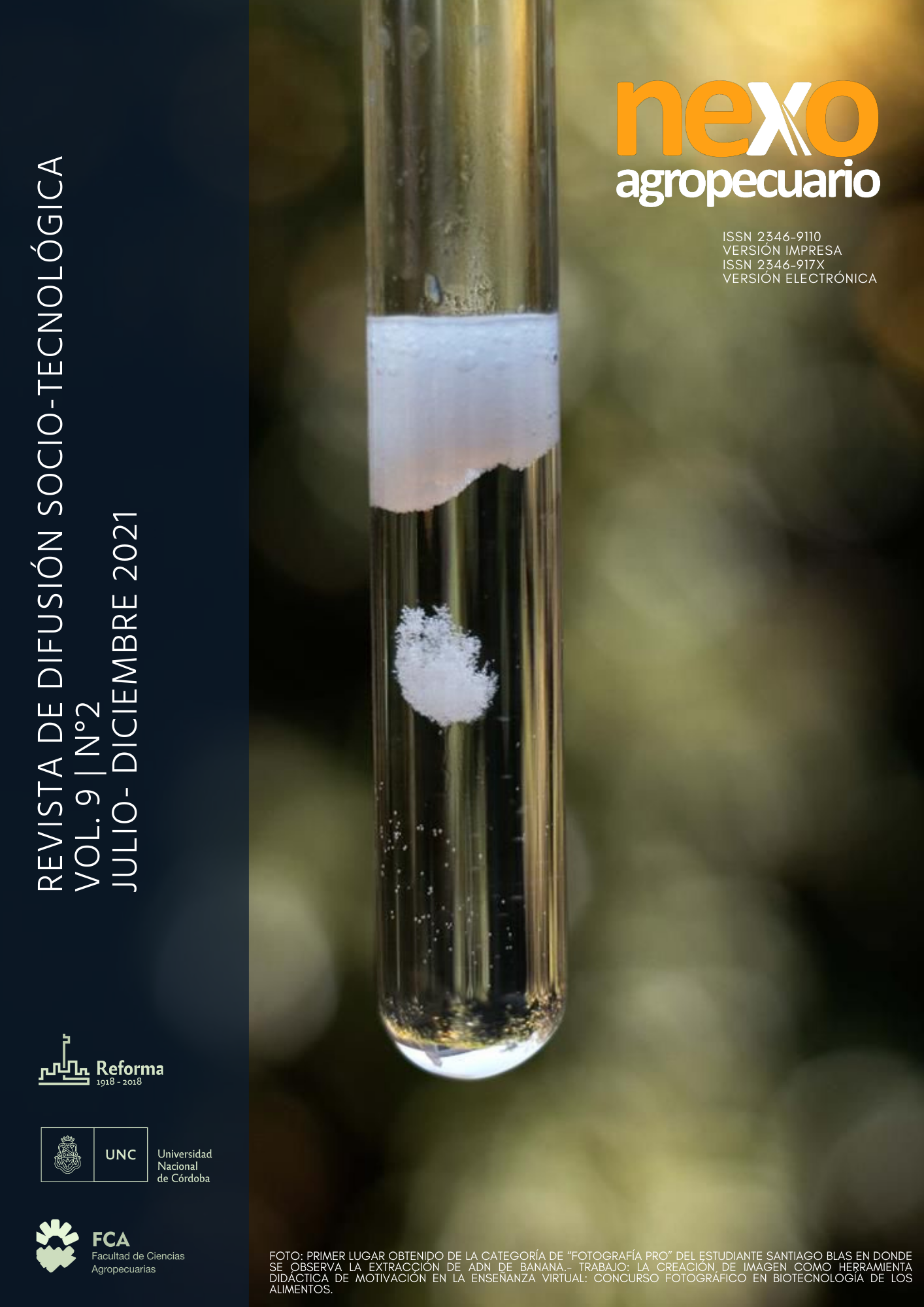English English
Keywords:
geographic association, mineral profiling, atomic spectroscopy, value added, plsAbstract
In the search for recognition of quality characteristics, authenticity and source of origin for commercially relevant foods of agronomic origin, the development of monitoring programs and tools that enable geographical differentiation of origin, quality controls, authenticity and traceability of the product has been intensified. The aim is to carry out further research on the mineral composition of different environments where peas are grown in Argentina and to carry out correlation evaluations with the grain. The multi-elemental analysis by techniques such as ICP-MS made it possible to show the metal/oid profile in pea grains and soil samples selected in an exploratory manner to begin the search for geographical associations. Pea samples of the commercial varieties Viper, Facon, Yams, Meadow and the corresponding soils were analyzed for five localities in different provinces of Argentina. Forty-five trace elements present in values lower than 0.000002 mg/ kg were determined.
Downloads
References
Alloway, B. J. (2005). Bioavailability of elements in soils. Essential of medical geology.
Borràs, E., Ferré, J., Boqué, R., Mestres, M., Aceña, L., & Busto, O. (2015). Data fusion methodologies for food and beverage authentication and quality assessment - A review. In Analytica Chimica Acta (Vol. 891, pp. 1–14). Elsevier. https://doi.org/10.1016/j.aca.2015.04.042
Dean, J. (2007). Bioavailability, Bioaccessibility and Mobility of Environmental Contaminants. Analytical Techniques in the Sciences.
Galhardi, J. A., Leles, B. P., de Mello, J. W. V., & Wilkinson, K. J. (2020). Bioavailability of trace metals and rare earth elements (REE) from the tropical soils of a coal mining area. Science of The Total Environment, 717, 134484. https://doi.org/10.1016/J.SCITOTENV.2019.134484
López Julián, P. L. M. C. (2002). Extracciones quimicas secunciales de metales pesados. Aplicaciones en ciencias geologicas. Estudios geologicos. Estudios Geologicos, 58, 133–134.
Millar, K. A., Gallagher, E., Burke, R., McCarthy, S., & Barry-Ryan, C. (2019). Proximate composition and anti-nutritional factors of fava-bean (Vicia faba), green-pea and yellow-pea (Pisum sativum) flour. Journal of Food Composition and Analysis, 82. https://doi.org/10.1016/j.jfca.2019.103233
Natalia, L., & Podio, S. (2015). Huella dactilar de trigo argentino: evaluación de la trazabilidad química y las características antioxidantes de trigo, harina y derivados.
Prieto, G. M. (2021). Bases para el manejo nutricional del cultivo de la arveja (Pisum sativum, var sativum) en la Region Pampeana Norte.
Sayago, A., González-Domínguez, R., Beltrán, R., & Fernández-Recamales, Á. (2018). Combination of complementary data mining methods for geographical characterization of extra virgin olive oils based on mineral composition. Food Chemistry, 261, 42–50. https://doi.org/10.1016/j.foodchem.2018.04.019
Silva, B., Gonzaga, L. V., Maltez, H. F., Samochvalov, K. B., Fett, R., & Costa, A. C. O. (2021). Elemental profiling by ICP-MS as a tool for geographical discrimination: The case of bracatinga honeydew honey. Journal of Food Composition and Analysis, 96. https://doi.org/10.1016/j.jfca.2020.103727
Downloads
Published
Issue
Section
License

This work is licensed under a Creative Commons Attribution-NonCommercial-ShareAlike 4.0 International License.
Aquellos autores/as que tengan publicaciones con esta revista, aceptan los términos siguientes:- Los autores/as conservarán sus derechos de autor y garantizarán a la revista el derecho de primera publicación de su obra, el cuál estará simultáneamente sujeto a la Licencia de reconocimiento de Creative Commons que permite a terceros compartir la obra siempre que se indique su autor y su primera publicación esta revista.
- Los autores/as podrán adoptar otros acuerdos de licencia no exclusiva de distribución de la versión de la obra publicada (p. ej.: depositarla en un archivo telemático institucional o publicarla en un volumen monográfico) siempre que se indique la publicación inicial en esta revista.
- Se permite y recomienda a los autores/as difundir su obra a través de Internet (p. ej.: en archivos telemáticos institucionales o en su página web) después del proceso de publicación del número de la revista, lo cual puede producir intercambios interesantes y aumentar las citas de la obra publicada. (Véase El efecto del acceso abierto).


